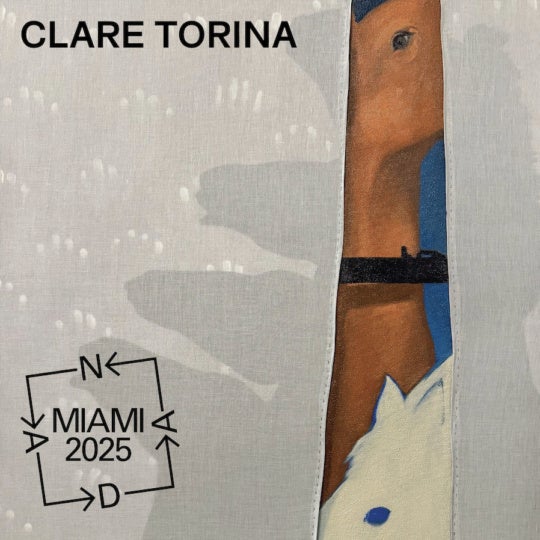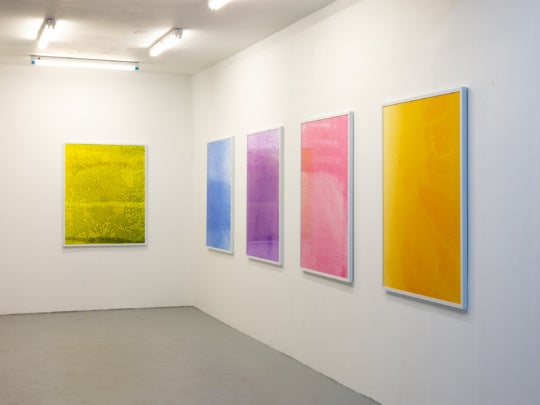
Spelman College Museum of Fine Art was the last stop on the traveling tour of Nancy Elizabeth Prophet: I Will Not Bend an Inch, a long overdue exhibition. Prophet isn’t a household name, but at Spelman College her story lands differently. For a decade in the 1930s and ’40s, she taught sculpture at Spelman, joining Hale Woodruff at Atlanta University to establish one of the first visual-arts departments at a historically Black college.
The exhibition gathers Prophet’s surviving sculptures—fewer than two dozen heads in wood, marble, and bronze. One hardwood figure, gouges left visible, stares out with pursed lips and a tightened jawline, strength and fragility fused in a single glance. These works are taut with intensity, and technically masterful, yet alive with the quiet force of someone carving through illness, hunger, and isolation. The show also recalls her Atlanta years: less mythologized than her Paris period but equally vital to her legacy.
Nancy Elizabeth Prophet (1890–1960) lived twelve years in Paris before arriving in Atlanta. Born in Warwick, Rhode Island, to a Narragansett father and a Black mother, she became the first known woman of color to graduate from the Rhode Island School of Design in 1918. Facing racism and few prospects, she boarded a ship in 1922 with little more than her tools and resolve. In Paris, she studied at the École des Beaux-Arts, exhibited at the Salon d’Automne, and drew praise for the conviction of her style. Yet those years were brutal. She lived on the edge of starvation, carving imagined sitters when she couldn’t afford models, treating endurance itself as art.[1] Her Negro Head (ca. 1924), believed to be a portrait of tenor Roland Hayes, and the onyx Silence (1926) radiate that discipline.[2]


By the early 1930s, the Depression had stripped her of patrons. W. E. B. Du Bois, calling her “our greatest Negro sculptor,” urged that she be given a teaching position.[3] Through Carnegie funding and the encouragement of Atlanta University president John Hope and Spelman president Florence Read, she was hired to teach sculpture, architecture, and art history, expanding Spelman’s new art curriculum. In an August 1934 letter, Hope offered her a nine-month contract, a salary of $2,000, and housing “in the University dormitory for thirty-six dollars a month.”[4] The tone is formal yet warm: he tells her that Atlanta already has teachers in music, drama, and painting and expects her “to give emphasis to your particular field—sculpture.” Prophet accepted and arrived that fall—modestly paid, but instantly essential.
Her classes met in a converted power-plant building that rattled with fans and the scrape of chisels. When proper materials were scarce, she found ways to keep her students working—substituting whatever was available and reminding them that the real challenge was to find energy and form in any medium. A woman sculptor in a male-coded medium, she lifted stone and clay with unflinching focus, embodying a toughness that defied stereotype. She urged them to meet difficulty with resolve, a mantra she lived by. She also welcomed students to her home for evening reading sessions, determined to “lift our minds from the common rut of complaint and gossip.”[5] Those gatherings, part salon and part study group, showed her faith that art was inseparable from disciplined thought.

Prophet’s decade in Atlanta was defined by teaching. In a 1940 Phylon essay, she wrote that a nation could be measured by how deeply it valued the arts. To her, artists bore responsibilities as great as those of Greece or Renaissance Italy, and cultural education was a moral duty. Her courses reflected that conviction. Drawing and Painting trained the eye through “line, mass, color, and form,” and Modeling taught clay construction and anatomy.[6] Yet what survives most vividly is her own classroom voice. In a 1936 note from the Spelman College Archives, she described trying to “awaken some latent sensibilities” in her students and laughing as she carried a live rooster across campus for her modeling class.[7] “At first they were disgusted,” she wrote. “A rooster as art seemed out of the question… Before it was done, it was a lesser disgrace to carry one.” The anecdote captures her humor and method: she taught by example, insisting, “I never ask my students to do anything that I will not do.”[8]
Prophet emphasized that the artist’s duty was discipline, acquiring tool skills, body and will. Prophet’s teaching style was hands-on and demanding; she worked along and moved among her students with a quiet insistence on purpose over product, urging them to think critically about every decision they made. For young Black women and men in the segregated South, to see Prophet lecturing on African masks while chiseling marble was transformative.


Prophet’s Paris training and grasp of both European and African traditions made her a revelation in Atlanta. In a city bounded by segregation, she embodied global possibility. To students who had rarely left the South, she proved that a Black woman could claim creative space anywhere. At an all-women’s Historically Black Colleges and University, her internationalism modeled liberation. She taught Gothic cathedrals and Benin bronzes with equal authority, insisting that mastery was not imitation but parity.[9] If she could carve in the lineage of Rodin, her students could stand beside anyone. She folded Parisian technique into Southern ambition, turning a small studio into a crossroads of modern art.
Her presence expanded what art education could mean. Atlanta’s cultural life then centered on church basements and social clubs; Prophet offered something more ambitious—art as intellect, discipline, and spiritual freedom. Her worldly experience didn’t distance her from her students; it gave them a horizon.
She was respected yet rarely celebrated on campus. Students called her stern but a thorough teacher and her former student, Hayward Oubre, described her as gifted and “eccentric.”[10] She sometimes admitted missing the freedom and vitality of her years in Paris, and in her resignation to Spelman confessed that she had a “great yearning to be out in the world again,” yet she stayed.[11] She remained devoted to giving her students access to the artistic training she had once crossed an ocean to find.

Teaching consumed her, leaving little time for her own work. The few surviving pieces from her Atlanta years, a reworked Head of a Cossack (1929) and several busts, are exceptions. By 1944, her production had slowed to a trickle. After returning to Rhode Island to care for her father, she faced illness, poverty, and obscurity. She applied unsuccessfully for fellowships and still dreamed of Paris. When she died in 1960, nearly forgotten, a former employer raised funds to prevent a pauper’s burial.
Prophet offered something more ambitious—art as intellect, discipline, and spiritual freedom. Her worldly experience didn’t distance her from her students; it gave them a horizon.
To bring Prophet back to Spelman today is to see her not only as a Parisian modernist or Rhode Island pioneer but as an Atlanta institution-builder. Her decade on campus secured a place for art in Black higher education, ensuring that Southern students, especially women, could train as serious artists.
The title I Will Not Bend an Inch captures both her grit and the quiet power in her sculptures. Her insistence that Black students deserved more than vocational training, that they merited the full spectrum of artistic study, still feels radical. Prophet’s Atlanta years may not have produced her most famous works, but they built something lasting: institutions, students, futures. The sound of chisels still rises from Spelman’s studios, dust catching in the same light that once fell across her hands.



[1] Nancy Elizabeth Prophet, Diary: Paris, France (1922), Brown Archival & Manuscript Collections Online, Brown Digital Repository, Brown University Library, https://repository.library.brown.edu/studio/item/bdr:786291/.
[2] Theresa Leininger-Miller, New Negro Artists in Paris: African American Painters and Sculptors in the City of Light, 1922–1934 (New Brunswick, NJ: Rutgers University Press, 2001), 41- 42.
[3] Theresa Leininger-Miller, New Negro Artists in Paris: African American Painters and Sculptors in the City of Light, 1922–1934 (New Brunswick, NJ: Rutgers University Press, 2001), 64.
[4] Hope, John, letter to Nancy Elizabeth Prophet, “Offer of Appointment,” August 13, 1934, John Hope Papers, Series 1121-111: Albert E. Manley Presidential Papers, folder “1934, Aug”, Spelman College Archives, Atlanta, GA.
[5] Joan M. Marter, Creating Their Own Image: The History of African-American Women Artists (New York: Oxford University Press, 2009), p. 114.
[6] Spelman College Bulletin, 1935–36, 33, Spelman College Archives, Atlanta, GA.
[7] Nancy Elizabeth Prophet, “Note on Modeling Class,” Fine Arts Reports, 1936, Spelman College Archives, Atlanta, GA, p. 2.
[8] Nancy Elizabeth Prophet, “Note on Modeling Class,” Fine Arts Reports, 1936, Spelman College Archives, Atlanta, GA, pgs. 6-8.
[9] Amalia K. Amaki and Andrea Barnwell Brownlee, Hale Woodruff, Nancy Elizabeth Prophet, and the Academy (Seattle: University of Washington Press / Spelman College Museum of Fine Art, 2007), p. 49.
[10] Amalia K. Amaki and Andrea Barnwell Brownlee, Hale Woodruff, Nancy Elizabeth Prophet, and the Academy (Seattle: University of Washington Press / Spelman College Museum of Fine Art, 2007), pgs. 53 and 54.
[11] Nancy Elizabeth Prophet letter to Spelman President Florance M. Reed, June 9, 1944, folder AEM Box 29, Spelman College Archives, Atlanta, GA.




